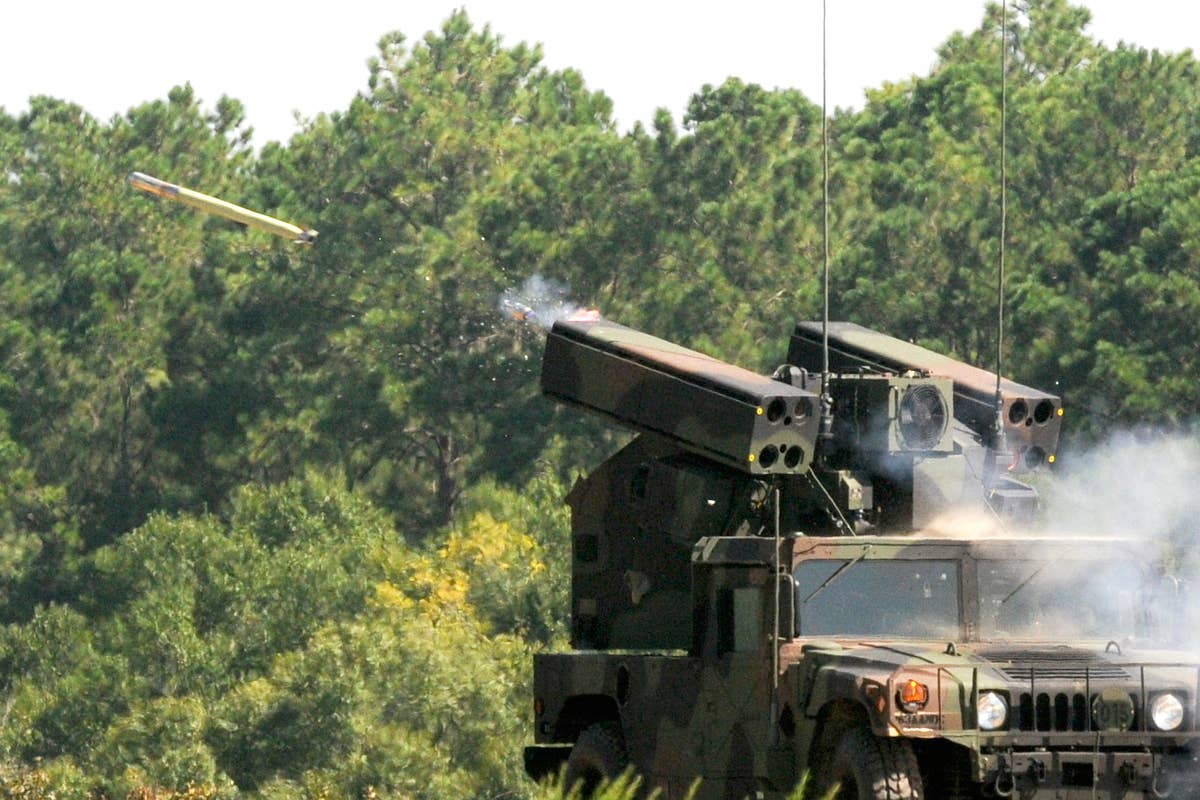The first batch of US-made Avenger air defense vehicles arrived in Ukraine earlier this month and have now been deployed around the country’s major cities like Kyiv and Chernihiv.
“Avengers are now in the capable hands of the Ukrainian Army,” the Ukrainian defense ministry said in a tweet featuring a video showing one of the Humvees mounted with lightweight, eight-round launchers.
As EurAsian Times reported earlier, Avenger is a short-range air defense (SHORAD) system intended to protect frontline combat units against drones, cruise missiles, helicopters, and low-flying aircraft using its FIM-92 Stinger missile launchers.
It is officially known as the AN/TWQ-1 and comprises a turret with two Stinger missiles launchers that can each fire four rounds at a time and an M39 machine gun that can fire 50 caliber rounds, and a sighting system that consists of an infrared camera, an optical sight, and a laser rangefinder. The US military has been known to use this system in Syria, at least since February 2021.
Drawbacks Of The Avenger Air Defense System
These Avengers have been assigned to Ukraine’s northern command, which maintains defenses in and around Kyiv, Chernihiv, and other important cities, which is strange, considering this is a frontline air defense system meant to protect infantry units as they advance.
Avengers are now in the capable hands of the #UAarmy.
We are grateful to our 🇺🇸 partners for their support!
Let’s win together.@combined2forces pic.twitter.com/eBJaqCGSH1— Defense of Ukraine (@DefenceU) April 6, 2023
David Axe, an American military commentator, suggested that the Ukrainians may have assigned these Avengers to a sector of the country where there is no large-scale ground combat happening because of some major drawbacks of this frontline air defense system.
These drawbacks, according to Axe, should make the Avengers difficult to be effectively employed in a highly contested battlefield environment.
As stated earlier, the Avenger system is mounted on a Humvee, which is unarmored, making it vulnerable to direct fire, small arms, and indirect fire. Therefore, even the US Army warned in a 2016 field manual that the “Avenger systems should not be integrated into the maneuver force when enemy contact is expected.”
Basically, an Avenger system can be taken out even by a determined rifleman if he is able to get close enough to the Humvee.

This is because, decades ago, the US Army became very comfortable with the assurance from the US Air Force (USAF) that it would control the sky over any imaginable battlefield. As a result, the US Army stopped developing new armored air defense vehicles and assigned most of its hundreds of unarmored Humvees mounted with Avengers to National Guard units.
However, the ongoing high-intensity conflict between Russia and Ukraine has demonstrated that even for a technologically and numerically superior air force like the Russian Aerospace Forces (VKS), air superiority over a battlefield cannot be a foregone conclusion.
“The current air-defense organization is a relic of the past two decades of static, theater-level, defensive deployments and needs to be seriously reevaluated in the face of new threats,” US Army captain Peter Mitchell said in an article written for West Point’s Modern War Institute.
That said, the US Army is now developing two new types of laser weapons systems for air defense, which include the 50 kilowatts class weapons and 300 kilowatts class weapons fitted on Stryker armored vehicles manufactured by General Dynamics.
The 50-kilowatt laser weapon is designated as the DE-MSHORAD (Directed Energy – Maneuver Short-Range Air Defense), which will be used to shoot short-range rockets, artillery, and drones. In contrast, the 300-kilowatt beams will be used against cruise missiles.
However, Ukraine is not about to get air-defense Strykers, at least not anytime soon. Therefore, for now, the Ukrainian infantry brigades will have to make do with Avengers, which could hinder their capability to fight while advancing deep behind Russian lines.
These Avengers will have to be deployed in such a way that they can protect an advancing infantry brigade while at the same time remaining out of harm’s way.
The US Army recommends in its field manual that commanders could use their Avengers for escorting supply convoys, command vehicles, and howitzers rather than embedding them with frontline infantry units.
This should keep the Avengers at a short distance from the heaviest of hostilities; however, during emergencies, Avenger crews may have to take the risk and move forward.
“Avenger units must retain the flexibility to shift and redirect fires to provide the best coverage,” the US Army recommended.
It remains to be seen now whether the Ukrainian commanders and Avenger crew are able to strike this very intricate sort of balance between protecting the frontline units using Avengers while keeping the Avengers safe as well.
The important question, though, is whether the Ukrainian military deploys these Avenger units with its frontline units, which could soon be answered during Ukraine’s much-anticipated counteroffensive in the spring or summer.
- Contact the author at tanmaykadam700@gmail.com
- Follow EurAsian Times on Google News